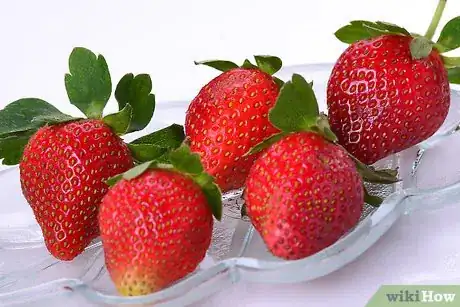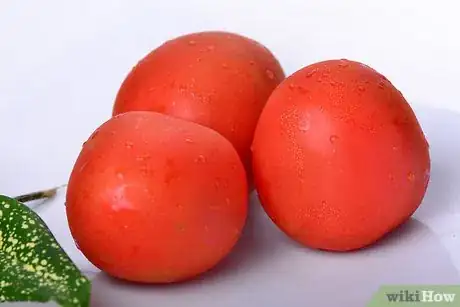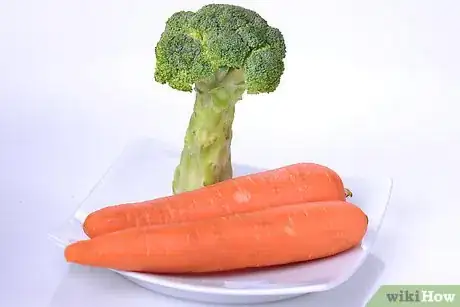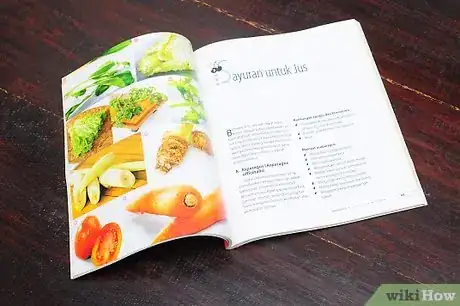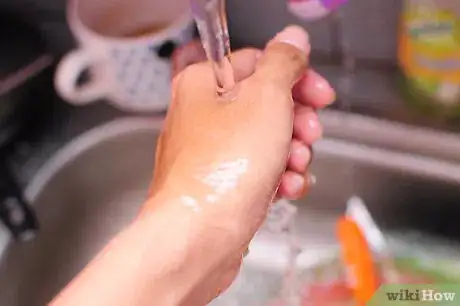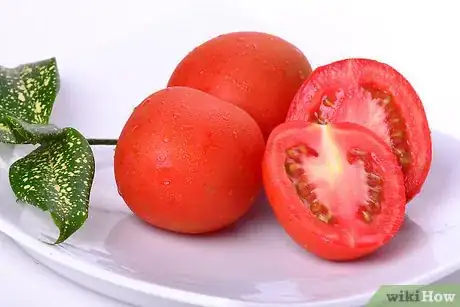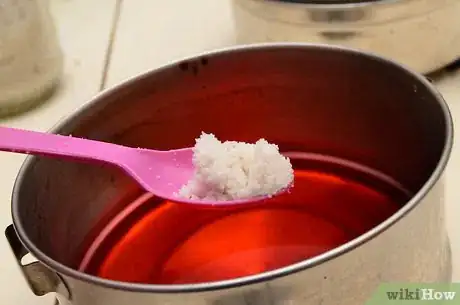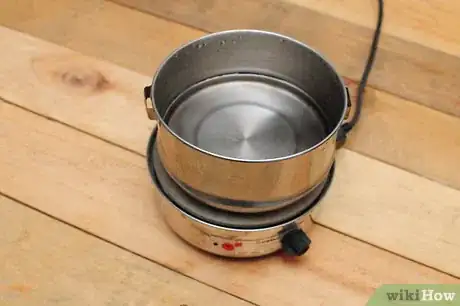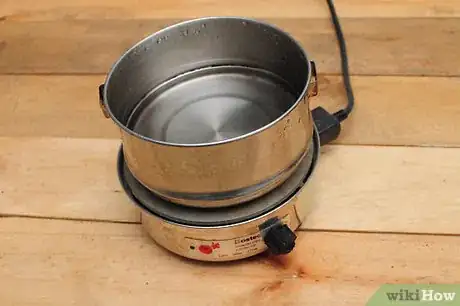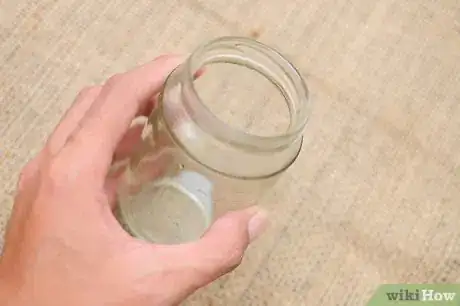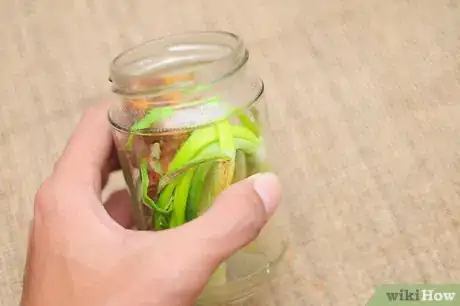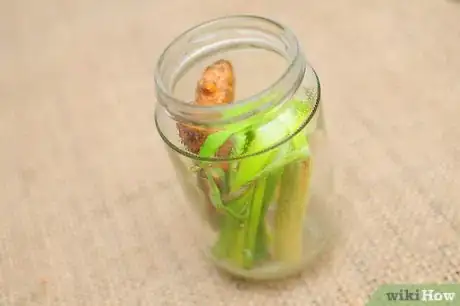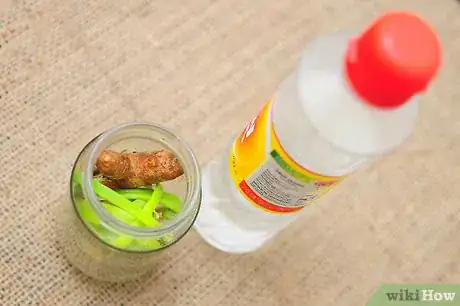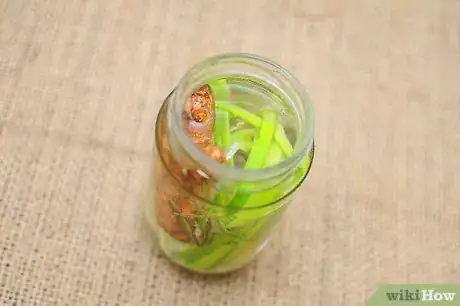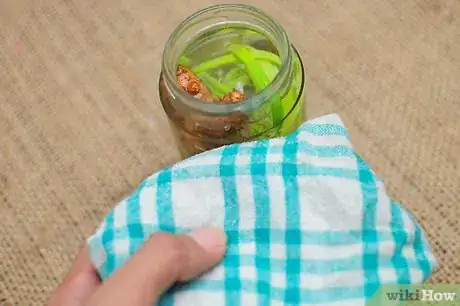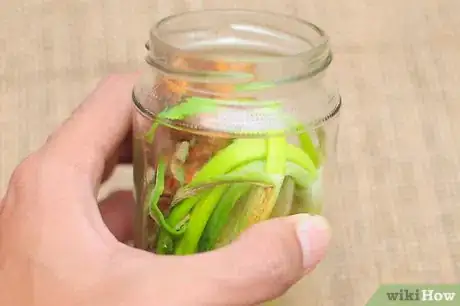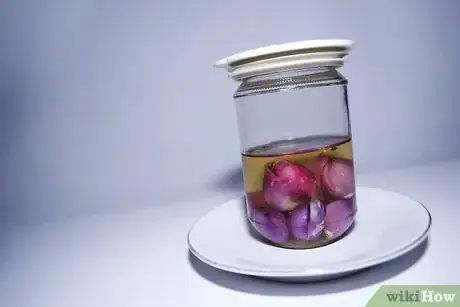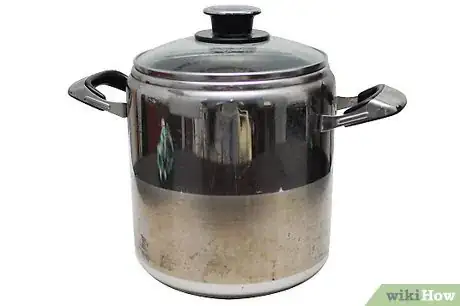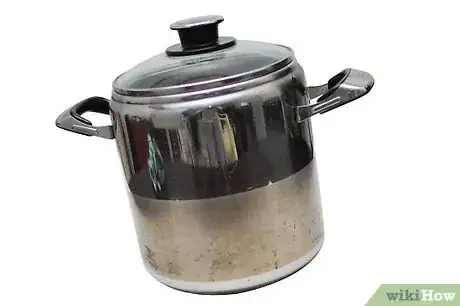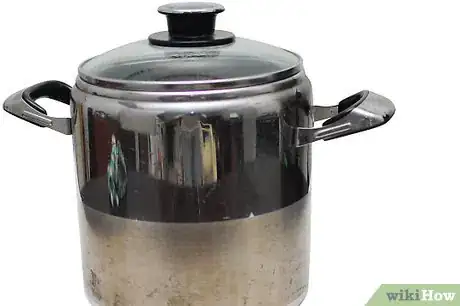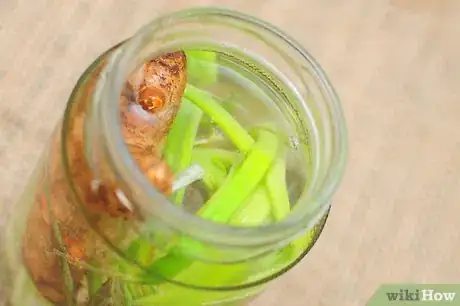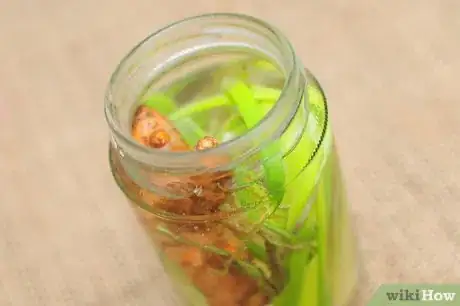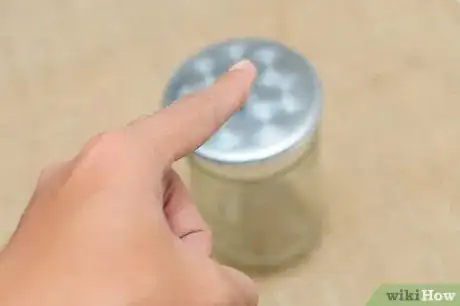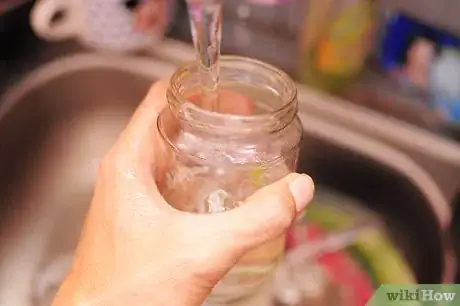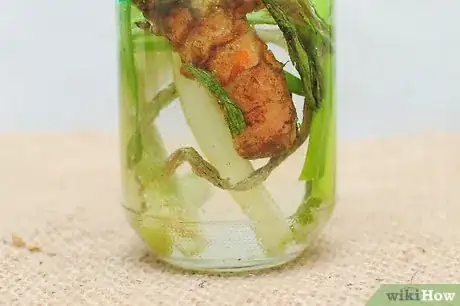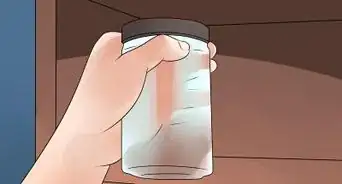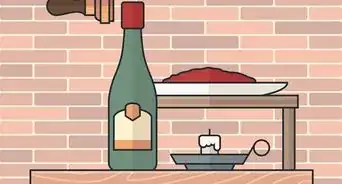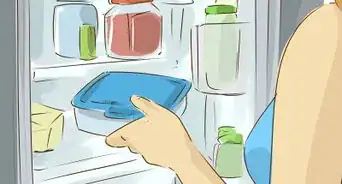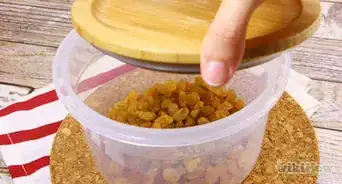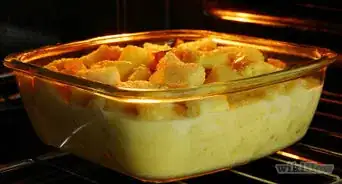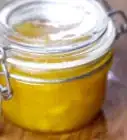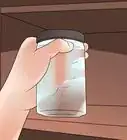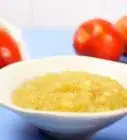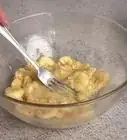wikiHow is a “wiki,” similar to Wikipedia, which means that many of our articles are co-written by multiple authors. To create this article, 41 people, some anonymous, worked to edit and improve it over time.
There are 15 references cited in this article, which can be found at the bottom of the page.
This article has been viewed 415,040 times.
Learn more...
Before refrigeration was common, people evened out the ebbs and floods of harvests by preserving excess for later use. One of the ways that food was preserved was through canning. While most food can only be canned safely under high temperature and high pressure conditions that will require a pressure canner, acidic foods (pH less than 4.6) can be preserved in jars by using a boiling water bath.
The basic principle of canning is to kill all the microorganisms that spoil food, then to seal the jar tight to keep them out. That's why canning places such emphasis on sterilization, cleanliness and hygiene.
Steps
Choosing Food to Can
-
1Choose what food you will can. It's best to can food that you like. There's no point in canning gallons of something you don't like or your family won't eat, unless you plan on giving your canned goods as gifts or selling them.
- If you grow your own fruits and vegetables, choose a food you have a lot of. If your peach tree has been particularly fruitful this year, can your peaches rather than the two strawberries your plant produced this season. Canning is a great way to preserve those extra tomatoes or apples at their peak.[1]
-
2Start with something fairly simple if you've never canned before. Some foods require more handling, time, and processing than others.
- If you're just beginning to can, start with one batch of tomatoes or jam, not 40 pounds of apples.[2] You can always do more as you grow comfortable with the process and decide you like it. Remember that while cherries can be canned, you'll have to take out every pit first.
Advertisement -
3Choose food in good condition. Fruits and vegetables should be firm and ripe, free of bad spots and mold.[3] Foods need not be beautiful to can them. If you are growing or buying tomatoes, you may find yourself with "process tomatoes" (tomatoes with more bulges and seams than might sell well in the supermarket) or pickling cucumbers.
Preparing the Food for Canning
-
1Consult a recipe and a current canning guide (see tips and sources) for the specific times and techniques for the foods you choose to can. Different foods require different processing. It's perfectly alright to use a favorite old family recipe, but compare it to a similar recipe in a modern guide and adjust the processing time and technique accordingly. The basics for safety may have changed since an old recipe was written.
- Consult the latest USDA guidelines or Ball or Kerr books for process times according to jar contents and size, especially if you use an old recipe.[4] Processing times have changed over the years because we have learned more about food safety and, in some cases, because foods are being bred differently. Tomatoes, for example, may be considerably less acidic than they used to be.
-
2Wash your hands thoroughly and keep them clean throughout the process. You want to reduce the amount of bacteria that could contaminate your canned food as much as possible. Wash them again before resuming work if you sneeze, visit the bathroom, or handle non-food items during the process.[5]
-
3Prepare the food according to the recipe. Most food will need to be cut up so that it can fit more easily into the jars.
- Peel and cut up fruits or vegetables. Note that you can "slip" certain fruits. Peel peaches, nectarines, and tomatoes by dipping them briefly in boiling water until the skins split open. Then, use a strainer to remove them and place them in cool water. When they are cool enough to handle, slip the skins right off them.
- Remove pits, stems, cores, and any other part you don't eat. Note that freestone peaches are those that readily relinquish their pits, whereas cling peaches tend to cling. Choose your fruit accordingly.
- Cook jam.
- Cook and/or soak pickles.
- Prepare relish, applesauce, apple butter, and other foods according to their recipes.
-
4Make the canning liquid if your recipe calls for it. Most fruits and vegetables are canned either in syrup (a mixture of water or juice and sugar) or brine (a mixture of water and salt). See your specific recipe to see which is called for.
- Basic canning syrup: For light syrup boil 6 cups of water and 2 cups of sugar. This will yield 7 cups of syrup. For medium syrup boil 6 cups of water and 3 cups of sugar. This will yield 6 ½ cups of syrup. For heavy syrup boil 6 cups of water and 4 cups of sugar. This will yield 7 cups of syrup.[6]
- Sugar can be replaced by Splenda or Stevia for a low-calorie option. Do not use Nutrasweet.
- Basic pickling mixture: Place 5 cups (1.2l) vinegar, 1 cups (240ml) water, 4 tsp. (20g) pickling salt, 2 tbsp. (28g) sugar and 2 cloves of garlic (optional but adds to the flavor) in a pot. Bring the pot to a boil. Once at a boil, reduce it to a simmer for 10 minutes. Remove the garlic cloves after the mixture has simmered for 10 minutes.
- Basic canning syrup: For light syrup boil 6 cups of water and 2 cups of sugar. This will yield 7 cups of syrup. For medium syrup boil 6 cups of water and 3 cups of sugar. This will yield 6 ½ cups of syrup. For heavy syrup boil 6 cups of water and 4 cups of sugar. This will yield 7 cups of syrup.[6]
Sterilizing the Jars
-
1Sterilize mason jars by boiling them in water for 10 minutes. It is important to sterilize the jars because if there is any bacteria in the jars when you put the food in and seal them, your canned food can go bad. If you are at high altitude, add an additional minute for each 1,000 feet (304.8 m) above sea level. Then, place them upside-down on a clean towel and drape another towel over them until you are ready to use them.[7]
- You can also sterilize your jars by placing them in the dishwasher. Run the dishwasher for a whole cycle.
-
2Boil about an inch (2.5cm) of water in the bottom of a medium saucepan. Remove the pan from the heat. Place the jar seals into the water. Push them down so that they sink, and try not to stack them on each other, so that they heat evenly. Allow them to soften for a minute or two. You can start this step while you fill jars and wipe rims, if you time it right.
Canning your Chosen Food
-
1Fill the jars. This step is also called packing the jars. Foods are said to be "hot-packed" or "cold-packed" depending on whether they are cooked and packed into jars hot or simply cut up and packed into jars cold. This difference may affect your cooking time for the same food, so be sure to read the recipe carefully.[8]
- A canning funnel will make the job easier, especially for small pieces and liquid or semi-liquid foods.
- For items in individual pieces, such as string beans, arrange them in the jar. Do this as neatly as you wish. If you'll be showing the jars in a fair, you may wish to pack very neatly. On the other hand, if you'll just dump them in soup someday, it may not be worth the bother to line them all up perfectly.
-
2Leave a little bit of space at the top, called "head space". The head space is necessary The head space varies between about an eighth of an inch (3mm) and an inch (25mm) depending on the food, so check instructions specific to whatever you are canning.[9]
-
3Add preservatives according to the recipe. Preservatives used in home canning include sugar, salt, and acids such as lemon juice and ascorbic acid (better known as Vitamin C) sold in powder form with other canning supplies. Add the preservative before adding the liquid, so that pouring the liquid over it mixes it in.
-
4Pour the syrup or preserving liquid into the jar. Leave a ½-inch of space at the top of the jar.
-
5Remove air bubbles. When you pour liquid over loose pieces, you'll leave air bubbles. Remove them by running a long, plastic knife (also available with canning supplies) down along the sides and jiggling or gently pressing the food.[10]
-
6Wipe the rims and threads of the jars with a clean, damp cloth to remove any residue or drips. Make especially sure to clean the top surface where the seal will sit.
-
7Place a softened seal on each jar. A magnetic lid wand will help you get them safely out of the boiling water. To release the seal, set it on a jar and tilt the wand.
- If you don't have a lid wand, you can use a small pair of tongs. Just don't touch the lids with your hands.
-
8Screw a clean ring down over the seal and tighten it with snug hand pressure. Don't tighten so much that you press all the seal material off of the rim.
Using a Canner
-
1Use a water bath canner if your canning recipe calls for it. Water bath canning works for many cooked foods (relish, pickles, jam) and acid fruits (applesauce, peaches, pears, apricots). Check a current recipe to be sure water bath canning is adequate for your food.[11]
- Lower the jars onto a rack in a water-bath canner or large stock pot. Add enough water to cover them by 1-2 inches (2.5-5cm). Remember to add hot water if the jars are hot-packed and cold water if the jars are cold-packed. Avoid subjecting jars to sudden, drastic changes in temperatures. You can measure it to the first knuckle, as shown. Don't stack jars in a water-bath canner.
-
2If you use a large stock pot, place a rack or other spacer (such as a small towel) on the bottom of the pot so that the jars do not rest directly on the bottom of the pot.
- Cover the canner and bring the water to a gentle boil. Boil for the specified time, adding to the processing time if you're more than 3,000 feet (914.4 m) above sea level.
-
3Use a pressure canner if your recipe calls for it.[12] Pressure canning is necessary for meats and most vegetables because they do not have enough acid in them. Pressure canning can also reduce the processing time for foods like peaches and tomatoes, compared to water bath canning. To prevent certain harmful bacteria from forming, it is necessary to process low-acid foods at a higher pressure. Pressure canners raise the temperature by building up pressure inside. Typically, it is necessary to raise the temperature to 240F (116C) to kill these bacteria.[13]
- Arrange the jars in the pressure canner. For smaller jars, you may be able to stack them, as long as you offset them. That is, instead of putting a jar bottom directly on a jar lid so it nests, straddle a jar bottom across the rims of other jars.
- Check your gasket before you begin pressure canning each year. They tend to dry out when they sit on a shelf. It must be able to form a seal. You may be able to revive a somewhat dry gasket by soaking it in just-boiled water. If your gasket is too old or cracked, replace it. You'll need to replace your gasket every year or two.
- Place the lid on the pressure canner and twist it firmly closed. Often the handle position will indicate what is closed. Remove the rocker from the lid of the canner.
- Bring the pressure canner to a boil. Watch the steam coming out of the opening where the rocker will go. There is usually also an indicator pin in the center. This pin will pop up as steam builds inside the canner.
- Allow the steam to vent for a period of time. When it is rushing out of the vent in a strong, even stream, it is called a "full head of steam". Let the canner vent with a full head of steam for seven minutes or as specified in your recipe or canner's instructions.
- Place the rocker on the vent and start timing the specified process time. The needle on the pressure gauge will begin to rise.
- Adjust the temperature on the stove so that the pressure in the canner is what is specified in your recipe, adjusted for altitude. This pressure is typically 10psi (gauge pressure) at sea level. You'll generally have to make multiple small adjustments to get the pressure right. It will take a few moments to see the effects of each adjustment, since a large pot full of water and jars needs to change before your needle shows the change.
- Attend pressure canners for the entire cooking duration, adjusting the temperature as necessary. Drafts and other variations will cause it to continue to shift. Lower the heat slightly if the pressure is too high and raise it if the pressure drops. Don't assume that you have reached the balance point, since drafts and other variations can disrupt the pressure fairly quickly. A pressure that is too low could fail to cook sufficiently hot; one that is too high could run the risk of breakage.
- Process the jars for the full time stated in the recipe then Turn off the heat, leaving the rocker on until the indicator pin drops. When the pin drops, remove the rocker and allow the canner to vent for a few minutes.
- Open the lid slowly and hold it between yourself and the jars for a few moments. You can even rest the lid loosely open on the pot rim for a minute or so. It doesn't happen very often (especially if you're careful to relieve the pressure gradually), but pressure canned jars occasionally break when the pressure is released.
Handling Processed jars
-
1Remove the jars from the canner. Jar tongs are a secure and safe way to do this, or you may be able to raise the entire basket in a water-bath canner. Place the jars on a clean towel to cool.
-
2Allow the full jars to cool for 24 hours in a place free from drafts. You may hear the metal lids make a loud plinking sound. That is simply the contents cooling and creating a partial vacuum in the jar. Don't touch the lids yet. Let them seal on their own.
-
3Check to make sure that the jars have sealed after several hours have passed. The vacuum created when the contents cooled should have pulled the "dome" lid down very tightly. If you can press the center of the lid down, it did not seal. It should not spring back. If any jars have not sealed, you can place a fresh lid on them and process them again or refrigerate those jars and use the contents soon.[14]
-
4Wash the jars in room-temperature, soapy water to remove any residue on the outsides. You can remove the rings at this point, since the seals should be holding themselves on securely. Allow the rings and jars to dry thoroughly before replacing the rings, to prevent rust.
-
5Label your canned goods with the year, at least. Also consider writing the contents, since apple and peach can be hard to tell apart a month later. Write your name, too, if you are giving the jars as gifts. You can use a sticker or a permanent marker.
- Mark your jars on the seals rather than the glass if you want to reuse the jars easily. Store sealed jars on a shelf, avoiding excessive exposure to heat or light. Refrigerate after opening.
Printable Food Labels
Community Q&A
-
QuestionThere is corrosion on the inside of the lid of canned sauerkraut. Is it spoiled? The lid was tightly sealed.
 Community AnswerCorrosion means that moisture was inside the can, and for a long time. That means that the food is also not healthy to eat.
Community AnswerCorrosion means that moisture was inside the can, and for a long time. That means that the food is also not healthy to eat. -
QuestionHow many years will the canned food last?
 Community AnswerIt depends on which food and preservatives you've added and where you've stored it. A factory standard can last up to three years, and may still be edible for up to ten.
Community AnswerIt depends on which food and preservatives you've added and where you've stored it. A factory standard can last up to three years, and may still be edible for up to ten. -
QuestionDo I need to keep the jars hot when I put the jam in them?
 Community AnswerYes, boil the jars and then when you are ready to can, put them on the counter, put the food inside and then put the lid on. As the jar cools, the lid will suction inward and create a vacuum that keeps your food sealed in and fresh until you open it (up to a year). You should see an indent on the top of the Mason jar if you did it correctly.
Community AnswerYes, boil the jars and then when you are ready to can, put them on the counter, put the food inside and then put the lid on. As the jar cools, the lid will suction inward and create a vacuum that keeps your food sealed in and fresh until you open it (up to a year). You should see an indent on the top of the Mason jar if you did it correctly.
Warnings
- Never use mayonnaise jars or other jars that aren't mason jars to pressure can.⧼thumbs_response⧽
- Avoid placing cold glass into hot water or vice versa. Sudden temperature changes can shatter the glass.⧼thumbs_response⧽
- "Open-kettle canning," a once-popular method of sealing jars by inverting them so that the hot contents create the seal, is not considered safe. Paraffin methods are also questionable. It is best to use metal lids and process the jars for the recommended amount of time in a boiling water bath.⧼thumbs_response⧽
- While you might save jars from purchased products that fit a canning jar ring, real canning jars are best. They are designed with thick enough glass to withstand repeated processing and home canning. Use those saved jars to store dry goods or your penny collection, instead.⧼thumbs_response⧽
- Home-canned foods can harbor deadly diseases if they spoil or are mishandled. Always process foods for the recommended duration, clean and sterilize jars properly before use, and discard any jar of food that is not sealed. Also discard any jar with contents that smell wrong or appear moldy or discolored.⧼thumbs_response⧽
Things You'll Need
Get the right equipment. Some things can be improvised and others can't. Don't let the length of this list scare you. These things should be in a well-stocked kitchen, anyway:
- Large saucepans, stock pot(s)
- Apron
- Large spoon(s)
- Good quality paring and chef's knives
- Bowls and spoons as needed
- Ladle
- Colander
- Old but clean towels that can get sticky or stained
- Kitchen timer
- Dishpan and dish soap
- Dishcloth
- Sieve
Basic canning needs:
-
Mason jars
- Choose an appropriate selection of sizes: half-pint, 12 oz, pint, 20 or 26-oz, and quart. Half-gallon and half-cup jars exist, but they're not good for beginners. Half-gallon jars may call for extremely long processing times if they are listed at all. Half-cup jars may be difficult to seal consistently.
- Distinguish between wide-mouth and regular-mouth mason jars. These are simply two sizes for lids and seals. Wide mouth jars are easier to pack with foods in large pieces, such as pear halves.
- Mason jar rings and seals. New jars come with these, or they may be purchased separately.
- Jar tongs (to remove hot jars from boiling water securely).
- Magnetic lid wand or small tongs.
- Water bath canner or large stock pot.
Get these items if and when you need them:
- Pressure canner
- Wire heat diffuser
- Jelly bag and rack
- Cheesecloth
- Bubble knife
- Ricer
- Pressure cooker
References
- ↑ https://nchfp.uga.edu/how/can3_tomato.html
- ↑ https://morningchores.com/how-to-can-food/
- ↑ https://extension.tennessee.edu/publications/Documents/SP527.pdf
- ↑ https://nchfp.uga.edu/publications/publications_usda.html
- ↑ https://www.cdc.gov/features/handwashing/index.html
- ↑ https://nchfp.uga.edu/how/can_02/syrups.html
- ↑ https://nchfp.uga.edu/publications/nchfp/factsheets/sterilizing.html
- ↑ https://www.motherearthnews.com/real-food/canning/raw-packing-vs-hot-packing-zecz11zsmi
- ↑ https://nchfp.uga.edu/questions/FAQ_canning.html#4
- ↑ https://www.thekitchn.com/q-sent-by-95103
- ↑ https://nchfp.uga.edu/publications/uga/using_bw_canners.html
- ↑ https://nchfp.uga.edu/publications/uga/using_press_canners.html
- ↑ https://www.pickyourown.org/pressurecanners.htm
- ↑ https://nchfp.uga.edu/how/general/cooling_jars_test_seals.html
- How to Make Jam - Original wikiHow article from which this page was derived.
About This Article
To can food, start by choosing some firm, ripe fruits or vegetables that are free of mold or bad spots. Then, peel and cut them up, removing any pits, stems, cores, or other parts that you don't eat. Next, prepare a pickling mixture if you're canning vegetables or a basic syrup if you're canning fruit. Finally, put your food in some sterilized canning jars with your canning liquid and then seal the jars. To learn how to can food using a canner, scroll down!
